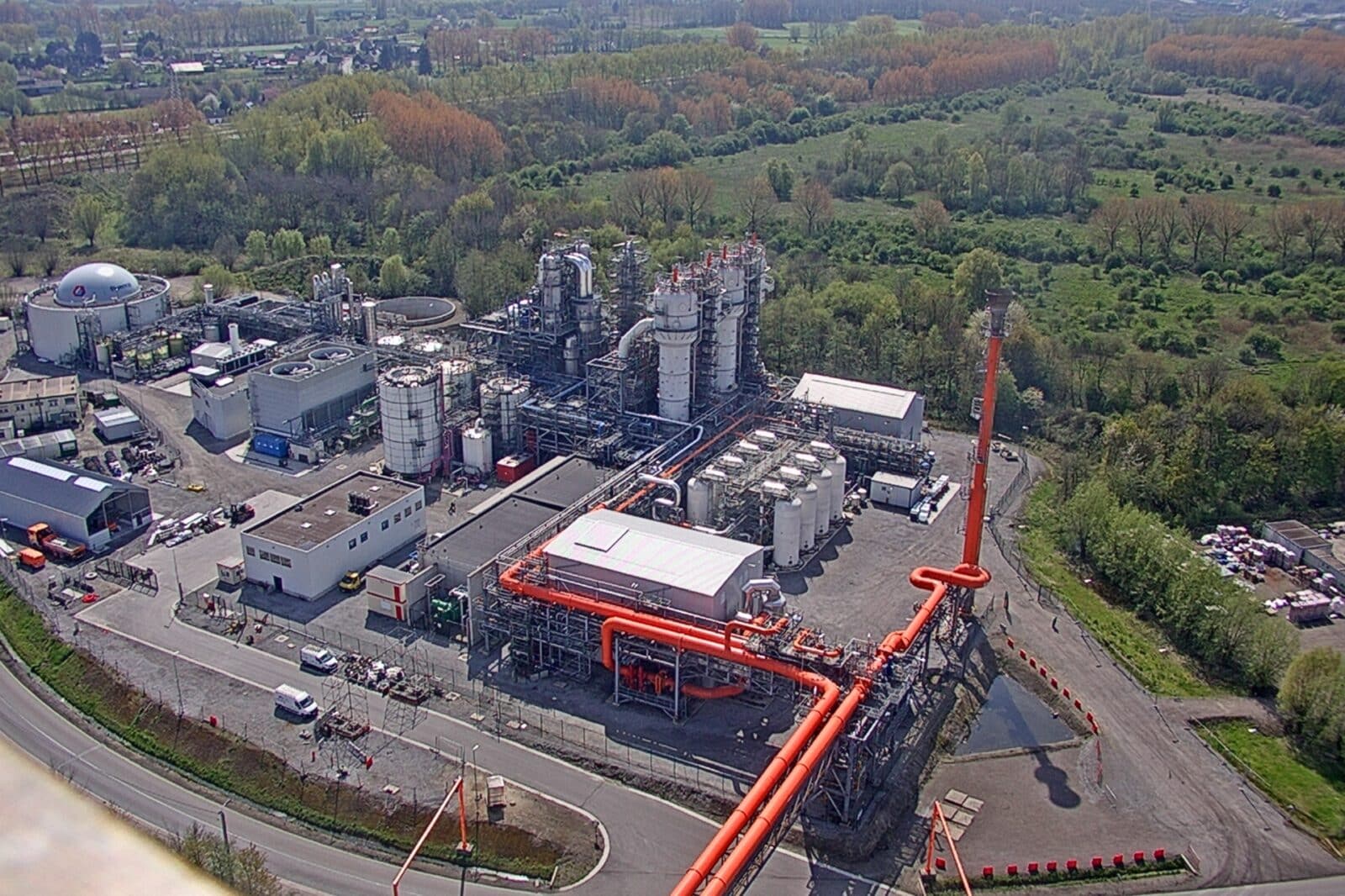Steelanol – Advancing Sustainable Steel Production
Steelanol, ArcelorMittal’s innovative bioreactor, transforms blast furnace gas into bioethanol, representing a paradigm shift in sustainable steel production. Within the Steelanol project, EnergyVille/VITO evaluates Steelanol’s impact on energy consumption, emissions, and the wider energy landscape.

An Innovative Bioreactor
The Steelanol project, spearheaded by ArcelorMittal, represents an important step in the pursuit of sustainable steel production. This bioreactor, the first of its kind in Europe, offers an alternative route to decarbonization by converting blast furnace gas into bioethanol. As such, Steelanol aligns with ArcelorMittal’s Carbon Capture and Utilization (CCU) strategy, contributing to the company’s goals of reducing greenhouse gas (GHG) emissions.
ArcelorMittal’s Sustainability Commitment
ArcelorMittal, one of the largest players in the global steel and mining sector, has set firm GHG reduction targets for its operations. These include a 25% reduction from 2018 levels for its global operations and a 35% reduction for its European operations by 2030. To achieve these objectives, ArcelorMittal is focusing on
two primary pathways: ‘Smart Carbon’ and ‘Innovative DRI’ (Direct Reduced Iron).
Pathways to Green Steel Production
Under the ‘Smart Carbon’ pathway, ArcelorMittal Gent has initiated demonstration projects such as Torero and Steelanol. The Torero plant uses torrefaction to convert waste wood into bio-charcoal, a circular carbon source that can replace coal in the blast furnace-basic oxygen furnace (BF-BOF) route. Meanwhile, Steelanol uses LanzaTech’s gas fermentation technology to convert waste gases into bioethanol. Through the utilization of CO and CO2 from biogenic sources, such as bio-charcoal produced by the Torero plant, Steelanol offers a sustainable solution with various industrial applications.
Contributing to the Energy Transition
EnergyVille/VITO’s involvement in the Steelanol project extends to studying its impact on energy consumption, emissions, and the broader energy system. Leveraging the TIMES-BE model developed by EnergyVille/VITO, comprehensive assessments have been conducted to evaluate Steelanol’s role in net-zero pathways towards 2050. The model suggests that Steelanol presents an economically viable option during the transition to a net-zero future, with potential for further emissions reductions through investments in additional capacity.

Future Perspectives and Recommendations
Although Steelanol production is expected to cease in 2050 due to evolving industry constraints, ongoing research into alternative biogenic carbon gas sources could prolong its operational lifespan. By exploring options such as incinerator exhaust gases or biomass plant flue gases, Steelanol could potentially remain operational beyond 2050, depending on further research and adaptation of the bioreactor’s microbial environment.
Our Partner
By partnering with ArcelorMittal, we are contributing to a greener, more sustainable future for steel production.
The Steelanol Report - A Full Energy System Perspective
Did you know that we recently dedicated a report to the Steelanol project?
In “Steelanol – A full energy system perspective”, innovative solutions are explored for reducing greenhouse gas emissions in the steel industry, and this in line with the EU’s Green Deal targets.
Download the full report by clicking the button below, and learn how Steelanol and related projects are contributing to a carbon-neutral future by 2050.
Want to know more?
Explore further information about the Steelanol project on the official project website, or contact our expert Juan Correa for additional insights.

